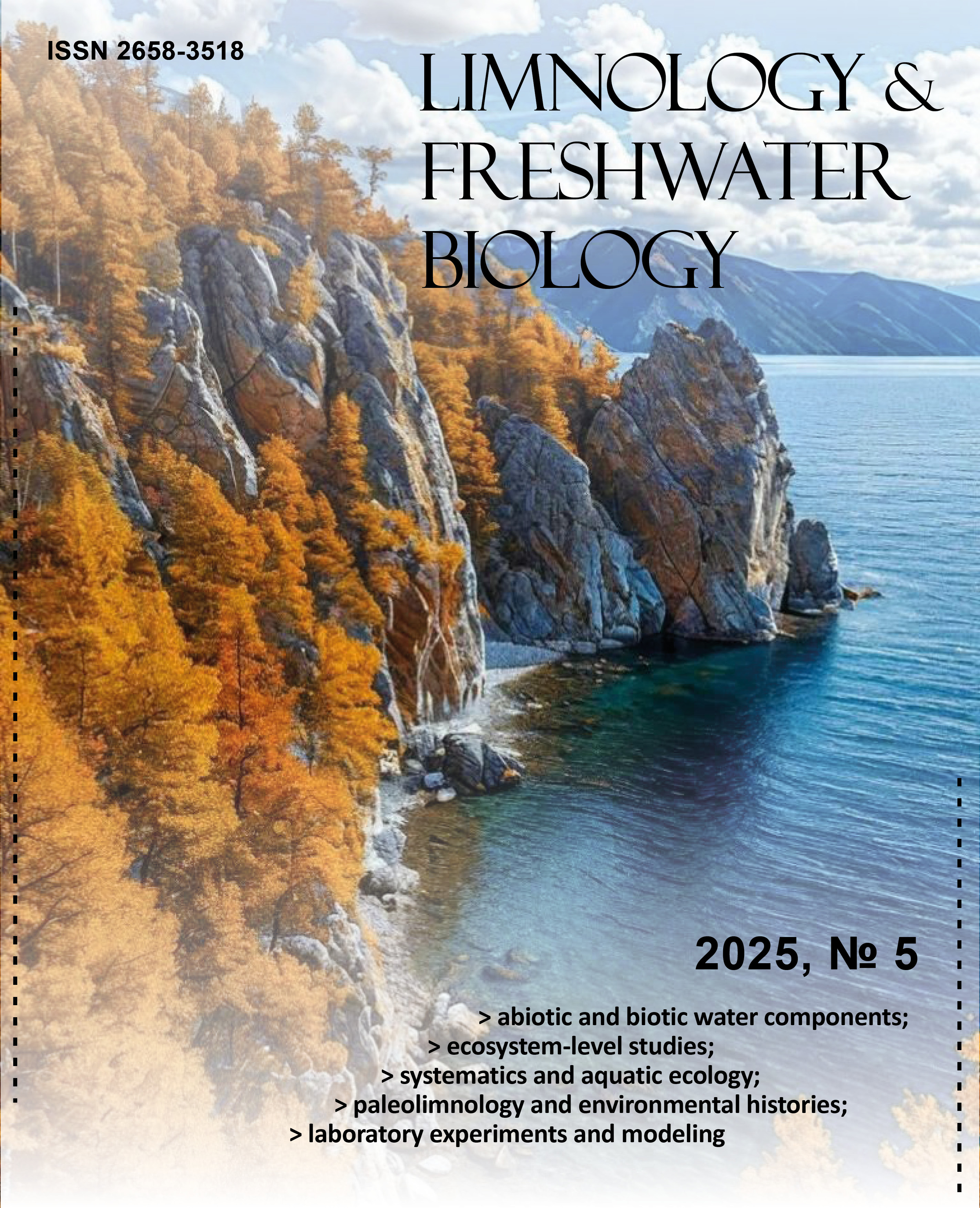Growth, mortality, and exploitation rate of Glossogobius giuris (Hamilton, 1822) in Lake Danao Natural Park, Ormoc City (Philippines)
DOI:
https://doi.org/10.31951/2658-3518-2025-A-5-1119Keywords:
exploitation rate, length-weight analysis, mortality, protected lake, tank gobyAbstract
The tank goby (Glossogobius giuris) is the most abundant and economically important fish species in Lake Danao, Ormoc City, Philippines. However, it is an introduced, non-native species in the lake. Despite its economic and ecological importance, there has been a lack of studies on its biology and population parameters in the lake. This study aimed to provide baseline information on the population biology of G. giuris by analyzing 867 individuals collected bi-monthly from March 2021 to February 2022. Using the von Bertalanffy growth model, the estimated asymptotic length (L∞), growth coefficient (K), longevity (tmax), and growth performance (Ø) were found to be 25.31 cm, 1.30 yr-1, 2.31 years, and 2.91, respectively. Due to its high growth rates, the species has become abundant, potentially adversely impacting native fish populations. On the other hand, the fishing (F), natural (M), and total mortalities (Z) were 3.56 yr-1, 2.15 yr-1, and 5.71 yr-1, respectively. The exploitation rate (E) was 0.62, which is above the optimal rate of 0.5. Recruitment peaks occurred in September and October, with high values for relative yield-per-recruit and biomass-per-recruit: Emax=0.421, E0.1=0.355, and E0.5=0.278. The high fishing mortality and exploitation rate indicate overfishing of the species, which could benefit native species in the lake. However, caution is still needed as continuous intensive subsistence fishing practices may deplete the fish stock in the lake and negatively affect the local fishing community.
Downloads
Published
Issue
Section
License
Copyright (c) 2025 Limnology and Freshwater Biology

This work is licensed under a Creative Commons Attribution-NonCommercial 4.0 International License.

This work is distributed under the Creative Commons Attribution-NonCommercial 4.0 International License.






